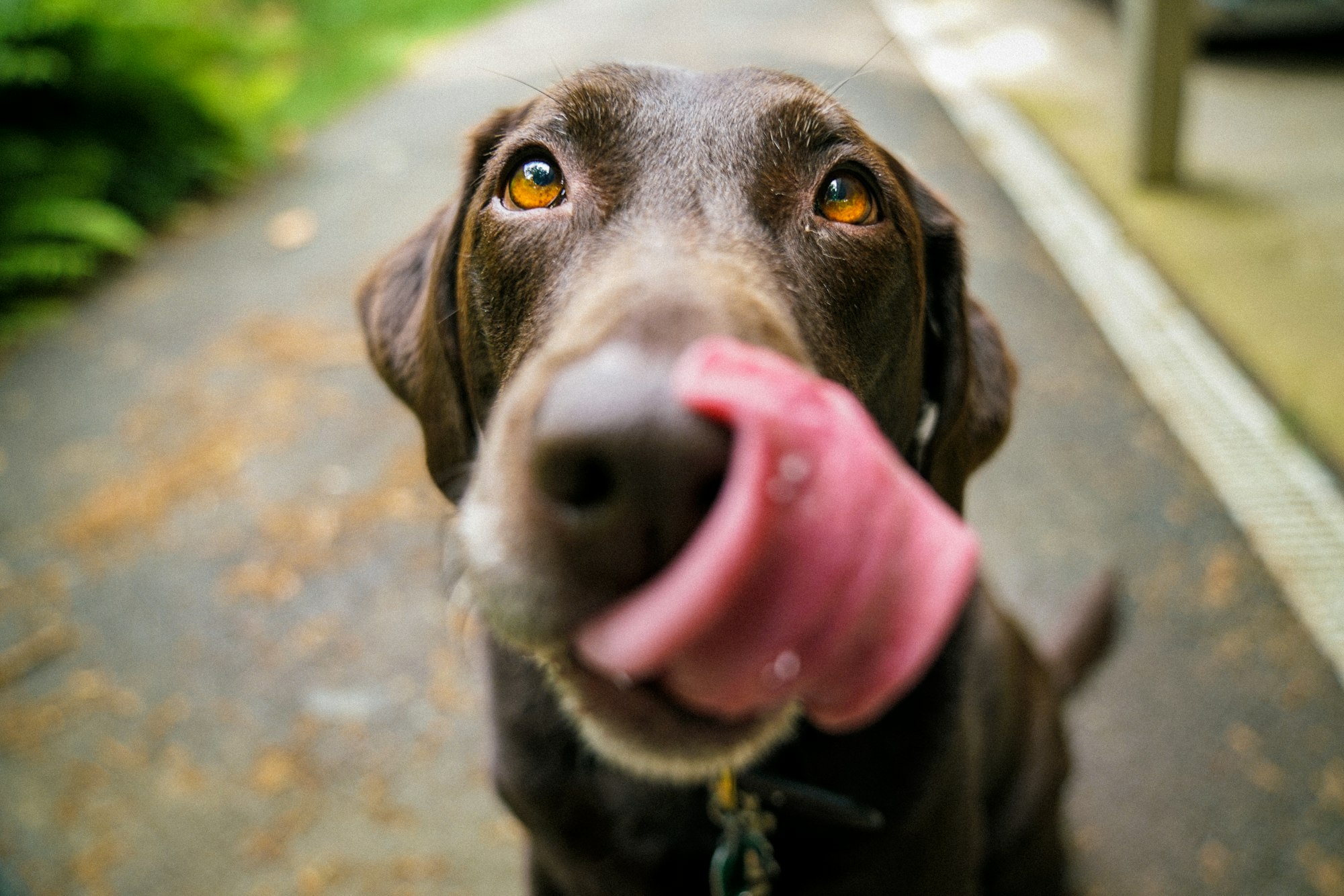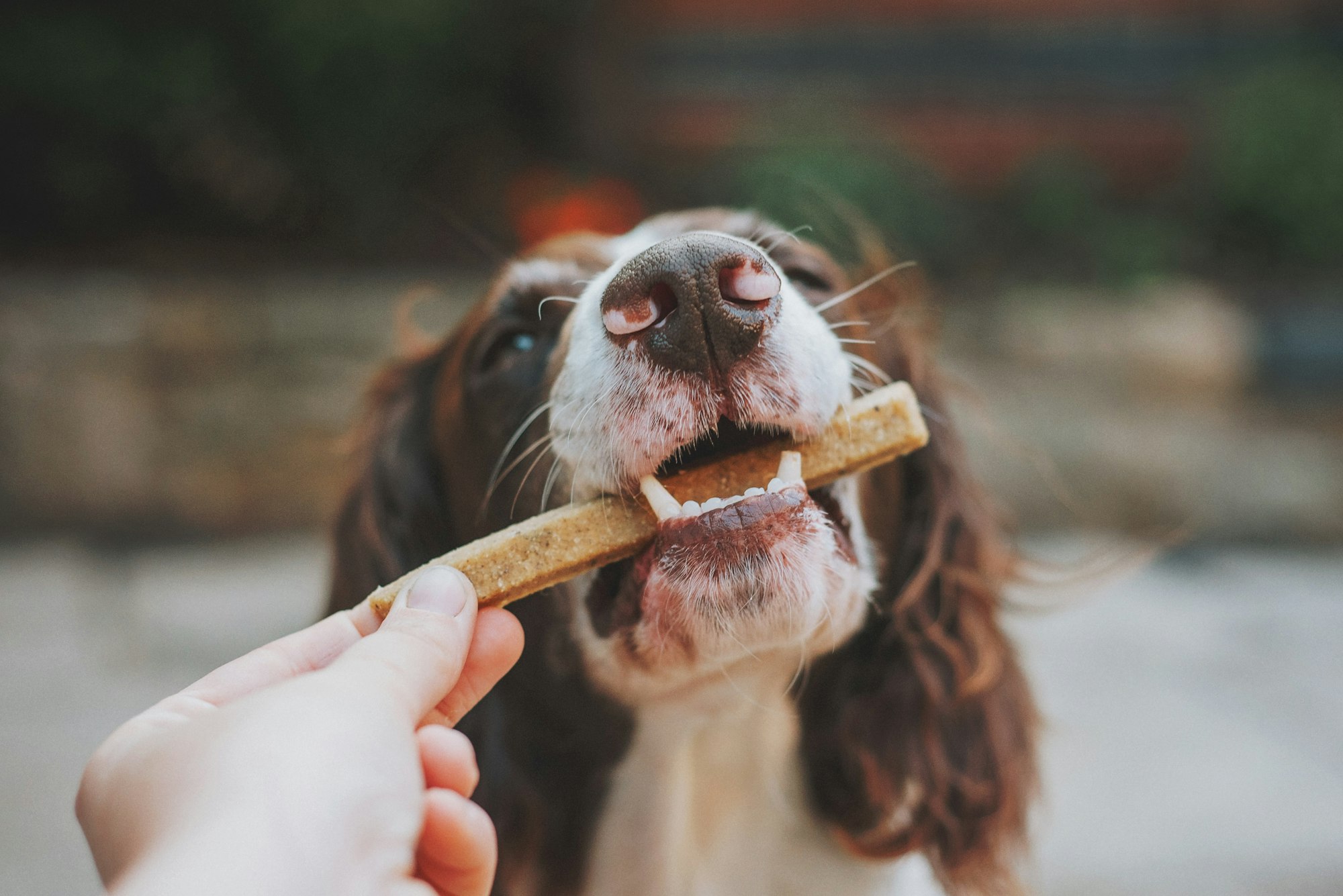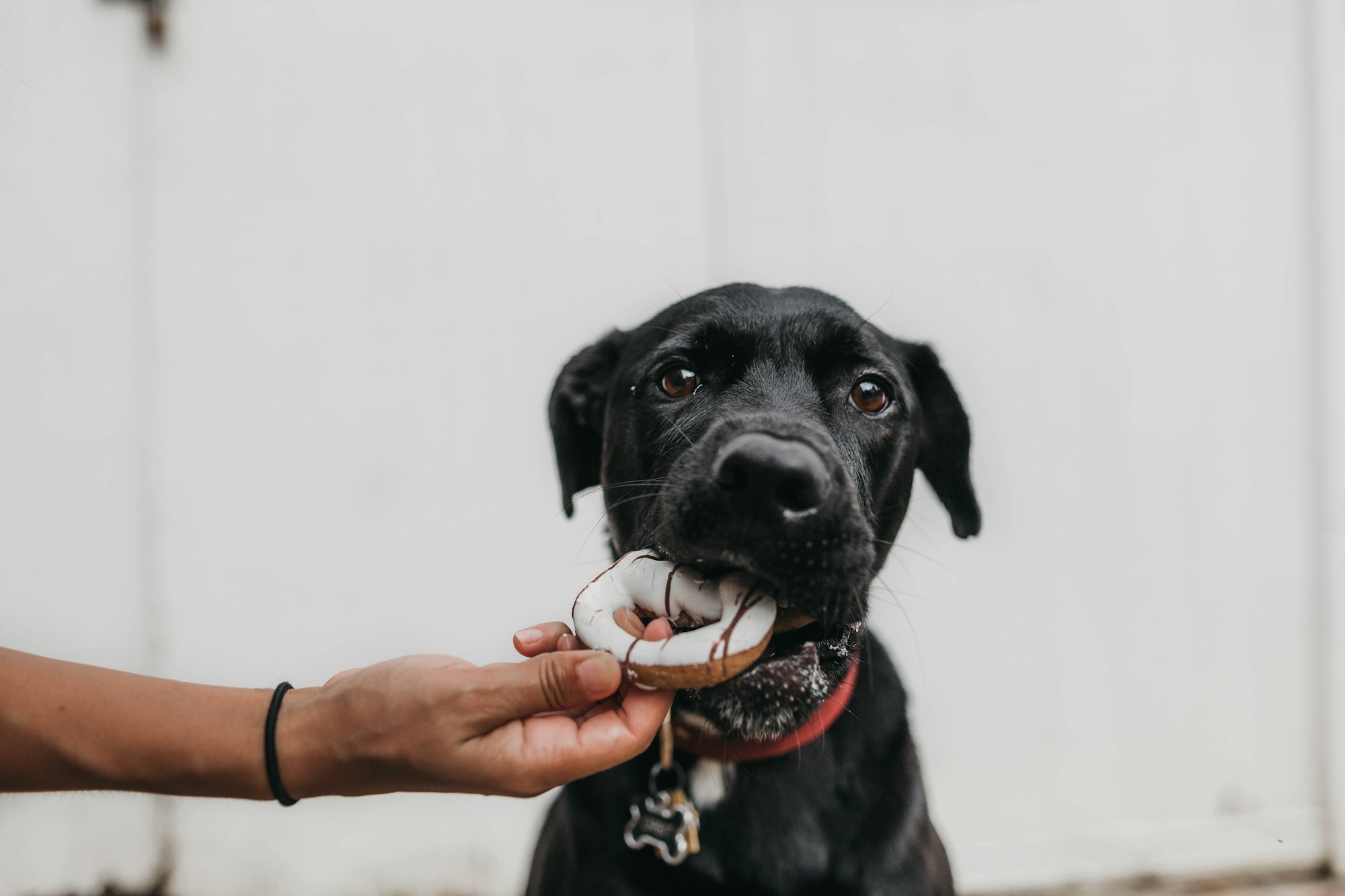Dogs, our loyal companions, exhibit a myriad of behaviors that often leave us curious and intrigued. One such behavior is chewing, a natural instinct deeply rooted in their evolutionary past. In this article, we delve into the fascinating world of dog chewing, exploring the reasons behind this behavior, its impact on their well-being, and how we, as responsible pet owners, can navigate and understand it better.

The Natural Instinct: Chewing in Dogs
Dogs, our loyal companions, have an inherent instinct to chew deeply embedded in their evolutionary history. This behavior can be traced back to their wild ancestors, particularly wolves. Understanding this natural inclination provides valuable insights into the role of chewing in a dog's life.
Evolutionary Reasons for Chewing
In the wild, chewing served various essential purposes for survival. Wolves, the ancestors of domestic dogs, used chewing as a means to:
- Maintain Dental Health: The mechanical action of chewing helped wolves keep their teeth clean and strong, a crucial aspect of their overall well-being.
- Exercise Jaw Muscles: Chewing tough materials provided an effective workout for their jaw muscles, contributing to their physical fitness.
Dental Benefits of Chewing
In the domestic setting, chewing continues to offer dental advantages for dogs. It's not merely a destructive habit but a mechanism for maintaining oral health.

- Plaque and Tartar Removal: The act of chewing helps remove plaque and tartar from a dog's teeth, reducing the risk of dental issues.
The Domestic Dog's Diet
The shift from a wild to a domesticated lifestyle has inevitably influenced the dietary habits of dogs. Understanding the differences between wild and domestic dog diets sheds light on the factors affecting their chewing behavior.
Differences Between Wild and Domesticated Dog Diets
Wild dogs, much like their wolf ancestors, primarily consume a raw and natural diet. This diet includes bones, meat, and other elements that naturally facilitate chewing. On the other hand, the modern domesticated dog often relies on processed commercial dog food, which may lack the same chewing opportunities.
Impact on Chewing Behavior
The transition to processed dog food can impact a dog's natural chewing instincts. Commercial dog food, while convenient, may not provide the same burst of flavors and textures as a raw diet, potentially leading to a lack of fulfillment in their chewing needs.
Challenges in Modern Dog Diets
The convenience of processed dog food comes with certain challenges that affect a dog's overall well-being.
Effects of Processed Dog Food
Processed dog food may not offer the same nutritional benefits and chewing satisfaction as a natural diet. This can result in dogs seeking alternative outlets for their chewing instincts, potentially leading to destructive behavior.
Lack of Natural Chewing Opportunities
Unlike their wild counterparts, domestic dogs may lack natural items like bones that facilitate healthy chewing. This scarcity of suitable chewing materials can contribute to boredom and other behavioral issues.
In the subsequent sections, we will delve deeper into the benefits of chewing for dogs, dispel common misconceptions, and explore ways to address and redirect chewing behavior in our canine companions.
Benefits of Chewing for Dogs
Chewing is not just a random canine behavior; it comes with a plethora of benefits that contribute to a dog's overall well-being. In this section, we explore the positive aspects of chewing, highlighting its significance beyond a simple act of consumption.
Dental Health Advantages
One of the primary benefits of chewing for dogs is its positive impact on dental health. The mechanical action of chewing helps in:
- Plaque and Tartar Removal: Chewing promotes the natural cleaning of a dog's teeth, reducing the buildup of plaque and tartar.
- Gum Stimulation: The act of chewing exercises the gums, enhancing blood circulation and maintaining healthy gum tissues.
Mental Stimulation and Stress Relief
Chewing serves as more than just a physical exercise; it's also a means of mental stimulation. This is particularly important for dogs, as mental engagement:
- Alleviates Boredom: Chewing provides an outlet for excess energy, preventing boredom-related destructive behaviors.
- Reduces Stress: The rhythmic and repetitive nature of chewing has a calming effect, helping dogs manage stress and separation anxiety.
Common Misconceptions About Dog Chewing
Despite the numerous benefits associated with chewing, several misconceptions surround this natural behavior. It's essential to dispel these myths to foster a better understanding of why dogs chew and how it contributes to their overall health.
Myths Surrounding Dogs and Chewing
- Chewing Indicates Aggression: Some believe that a dog chewing on objects is a sign of food aggression. In reality, chewing is a natural behavior that can be directed towards appropriate outlets.
- Destructive Chewing is Always a Behavioral Issue: While destructive chewing can be a concern, it doesn't always indicate behavioral problems. Often, it stems from unmet chewing needs.
Understanding Your Dog's Chewing Habits
Every dog is unique, and so are their chewing habits. Understanding what is normal for your happy dog is crucial for effective communication and care. This involves recognizing the distinctions between normal exploration and potentially problematic chewing.

Recognizing Normal Chewing Behavior
Normal chewing behavior includes:
- Exploration: Dogs use their mouths to explore their environment, which is a natural and instinctive behavior.
- Chewing on Toys: Appropriately chewing on toys or designated items is a positive and healthy behavior.
Identifying Signs of Problematic Chewing
Signs of problematic chewing may include:
- Destructiveness: Chewing on furniture, shoes, or other non-toy items.
- Excessive Chewing: Continuous and obsessive chewing, even when not engaged in play.
Understanding the nuances of your dog's chewing habits enables you to provide appropriate outlets for their natural instincts and ensures a harmonious relationship between you and your furry friend. In the upcoming sections, we'll explore strategies for addressing and redirecting problematic chewing, and delve into the correlation between a dog's age and their chewing patterns.
Addressing Chewing Issues
While chewing is a natural and necessary behavior for dogs, addressing issues related to destructive or inappropriate chewing is crucial for both the well-being of your dog and the preservation of your belongings. In this section, we'll explore practical tips for preventing and managing chewing challenges.
Tips for Preventing Destructive Chewing
- Provide Adequate Chew Toys: Ensure your dog has a variety of appropriate chew toys. This not only satisfies their chewing instincts but also helps prevent them from seeking alternative, less suitable items.
- Use Bitter Sprays or Deterrents: Apply pet-safe bitter sprays on furniture or items your dog tends to chew. The unpleasant taste discourages further chewing.
- Supervise and Correct: Keep a close eye on your dog, especially during the early stages of training. If you catch them in the act of inappropriate chewing, gently redirect them to an approved toy.
Toys and Activities to Encourage Healthy Chewing
- Interactive Dog Toys: These puzzle toys engage a dog's mind and provide a rewarding chewing experience.
- Durable Chew Bones: Invest in high-quality, durable chew bones designed for your dog's size and chewing strength.
- Rotate Toys Regularly: Keep your dog's toys interesting by rotating them regularly. Introducing new textures and shapes can stimulate their interest in appropriate chewing.
Training and Redirecting Chewing Behavior
Effective training plays a pivotal role in redirecting your dog's chewing behavior towards acceptable outlets. Employing positive reinforcement techniques helps create a positive association with appropriate chewing.
Positive Reinforcement Techniques
- Reward Good Behavior: When your dog chews on an approved item, provide positive reinforcement such as treats, praise, or affection.
- Create a Chew-Friendly Environment: Designate a specific area for your dog's chewing activities. This helps them understand where it's acceptable to chew.
- Consistency is Key: Be consistent in your approach. Reinforce positive behavior consistently, and avoid inadvertently encouraging inappropriate chewing.
Effective Redirection Strategies
- Interrupt and Redirect: If you catch your dog chewing on something they shouldn't, calmly interrupt the behavior and redirect them to an appropriate chew toy.
- Use Commands: Teach commands like "leave it" or "drop it" to redirect your dog's attention when needed.
- Seek Professional Training: If chewing issues persist, consider seeking guidance from a professional dog trainer to address specific behavior challenges.
Health Concerns Related to Dog Chewing
While chewing is generally beneficial, there are health concerns associated with certain chewing behaviors. Being aware of these potential issues allows for proactive measures to ensure your dog's safety.

Swallowing Hazards and Digestive Issues
- Small Object Ingestion: Dogs may accidentally swallow small objects while chewing. Monitor your dog and provide appropriately sized toys to minimize choking hazards.
- Digestive Upset: Ingesting large pieces of non-digestible items can lead to digestive issues. Choose toys that are safe for your dog's size and supervise their chewing activities.
Veterinary Advice on Safe Chewing Practices
- Regular Check-ups: Schedule regular veterinary check-ups to assess your dog's dental health and address any concerns related to chewing behavior.
- Consult with Your Veterinarian: If you notice changes in your dog's chewing habits or suspect any health issues, consult with your veterinarian for personalized advice and guidance.
Age and Chewing Patterns
Understanding how a dog's chewing patterns evolve with age is crucial for tailoring care and addressing their changing needs. In this section, we explore how puppies, adult dogs, and senior dogs exhibit distinct chewing behaviors.
Changing Chewing Habits as Dogs Age
- Puppies (Up to 6 Months):
- Teething Phase: Puppies experience discomfort during teething, leading to increased chewing. Provide soft, safe toys to soothe their gums.
- Supervision is Key: Puppies are prone to exploring the world with their mouths. Supervise them closely and offer appropriate chew toys.
- Adult Dogs (6 Months to 7 Years):
- Established Chewing Habits: By adulthood, dogs have established their chewing habits. Provide a mix of durable chew toys to satisfy their natural instincts.
- Dental Health Maintenance: Continue promoting dental health through appropriate chewing materials.
- Senior Dogs (7 Years and Older):
- Changing Dental Needs: Senior dogs may have dental issues, and their chewing preferences may change. Opt for softer chew toys that are gentle on aging teeth.
- Moderation is Key: While continuing to provide opportunities for chewing, be mindful of potential dental sensitivities.
Tips for Puppies and Chewing
Puppies, with their boundless energy and teething challenges, require specific attention to their chewing needs. Here are tips to navigate the puppy chewing phase:
Teething Challenges
- Teething Toys: Provide specially designed teething toys to alleviate discomfort during the teething phase.
- Frozen Treats: Offer frozen treats like ice cubes or specially formulated puppy ice treats to numb sore gums.
Suitable Chew Toys for Puppies
- Soft Rubber Toys: Opt for soft rubber toys that are gentle on puppy teeth.
- Durable, Puppy-Specific Toys: Choose toys designed for puppies, considering their size and chewing strength.
Case Studies: Behavioral Challenges and Solutions
Real-life examples of behavioral challenges related to chewing shed light on practical solutions for pet owners dealing with similar issues.
Case Study 1: Destructive Chewing
Challenge:
- A dog exhibits destructive chewing, targeting furniture and personal belongings.
Solution:
- Identify the root cause (boredom, anxiety) and address it.
- Provide an array of chew toys and regularly rotate them to keep the dog engaged.
- Use deterrents on inappropriate items and reward positive chewing behavior.
Case Study 2: Aggressive Chewing
Challenge:
- A dog displays aggressive chewing behavior, snapping at anyone attempting to approach.
Solution:
- Assess the dog's overall temperament and consult with a professional trainer.
- Gradually introduce positive reinforcement techniques to redirect aggressive chewing.
- Use calming aids and ensure a safe environment during training.
Case Study 3: Unwillingness to Chew
Challenge:
- A dog shows disinterest in chewing toys, potentially affecting dental health.
Solution:
- Experiment with different textures and types of chew toys.
- Incorporate interactive play to make chewing more engaging.
- Consult with a veterinarian to rule out any underlying dental issues.
Understanding these case studies provides valuable insights into the diversity of chewing challenges and underscores the importance of individualized approaches for effective solutions.

Conclusion
In conclusion, understanding why dogs chew their food is integral to responsible pet ownership. Chewing is a natural behavior deeply ingrained in their evolutionary history, and providing appropriate outlets for this instinct is crucial for their well-being. By embracing and guiding this behavior positively, we contribute to the overall happiness and health of our beloved canine companions.
FAQs (Frequently Asked Questions)
- Q: Is it normal for my dog to chew on everything?
- A: Yes, dogs explore the world through their mouths. However, providing suitable chew toys can help redirect this behavior.
- Q: What are the best chew toys for puppies?
- A: Opt for soft rubber toys or specifically designed puppy teething toys to soothe their gums.
- Q: Can chewing help with my dog's dental health?
- A: Absolutely. Chewing aids in removing plaque and tartar, promoting better oral hygiene.
- Q: How do I prevent my dog from chewing furniture?
- A: Ensure ample access to appropriate chew toys and discourage inappropriate chewing with positive redirection.
- Q: When should I be concerned about my dog's chewing habits?
- A: If your dog suddenly exhibits changes in chewing behavior or shows signs of distress, consult with a veterinarian.